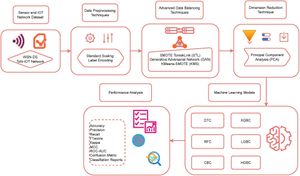The Securities and Exchange Board of India (SEBI) is taking steps to ease investment restrictions for Category II Alternative Investment Funds (AIFs) by allowing them to invest in listed debt securities with credit ratings of ‘A’ or below. This initiative addresses growing concerns about the diminishing pool of unlisted debt securities, which has been impacted by SEBI's Amendments to the Listing Obligations and Disclosure Requirements (LODR) regulations.
According to SEBI's recent consultation paper, Category II AIFs, which primarily target investments in unlisted securities, are now proposed to invest over 50% of their total funds either in unlisted securities or listed debt securities rated ‘A’ or lower. This can be done directly or through units of other AIFs. The intention behind this guideline is to adapt to the shifts within the market, as recent regulatory changes have required listed entities to exclusively list their non-convertible debt (NCD) securities on stock exchanges, thereby reducing the availability of unlisted debt securities.
Category II AIFs are pivotal for financing businesses lacking access to conventional funding routes or those not yet prepared to go public. Given their focus on unlisted securities, these funds inherently face both liquidity and credit risks. SEBI recognizes this aspect and seeks to broaden the investment latitude for these funds, enabling them to manage potential risks more effectively.
Notably, there are 192 schemes within Category II AIFs, with many having already invested more than 50% of their total funds in unlisted debt. SEBI has noticed representation from industry participants urging for this expansion of investment opportunities. The regulator believes incorporating credit ratings can effectively help assess risk, aligning with the higher-risk investment strategies typically associated with Category II AIFs.
“To address the possible shrinkage of investment opportunities arising from the unlisted debt securities universe, the requirement for Category II AIFs to maintain more than 50% of their corpus in unlisted securities could also be fulfilled through investments in listed debt securities with credit ratings of ‘A’ or below,” SEBI articulated after deliberations.
These adjustments come on the heels of recent changes made to the listing regulations. Specifically, one significant alteration specifies listed entities with outstanding listed debt securities will be prohibited from issuing any new listed debt securities beginning January 1, 2024. This specific change is triggering anxieties about the availability of unlisted securities and appearing to lead to the proposed flexibility for AIF investments.
SEBI has made it clear it welcomes feedback from the public on this proposal until February 28. The proposal not only aims to create new avenues for investment but also strives to reinforce prudent investment practices, encouraging Category II AIFs to leverage likely shifts within the marketplace.
Despite the regulatory changes, the significance of proper investment practices remains, ensuring these funds maintain due credit risk involved. Investment strategies are influenced significantly by the prevailing economic atmosphere and regulations, and SEBI's proposed changes may well transform how Category II AIFs approach their investment portfolios.
With the investment environment rapidly changing, anticipation builds on how these enabling statutes may impact the broader financial ecosystem as AIFs navigate the complicated waters of investment strategy. The dynamic character of the market serves as both challenge and opportunity for funds which play such key roles within India’s financial infrastructure.
Investors keep watchful eyes on how these changes will materialize, as they could very well alter the risk-reward equations for those investing through Category II AIFs.



